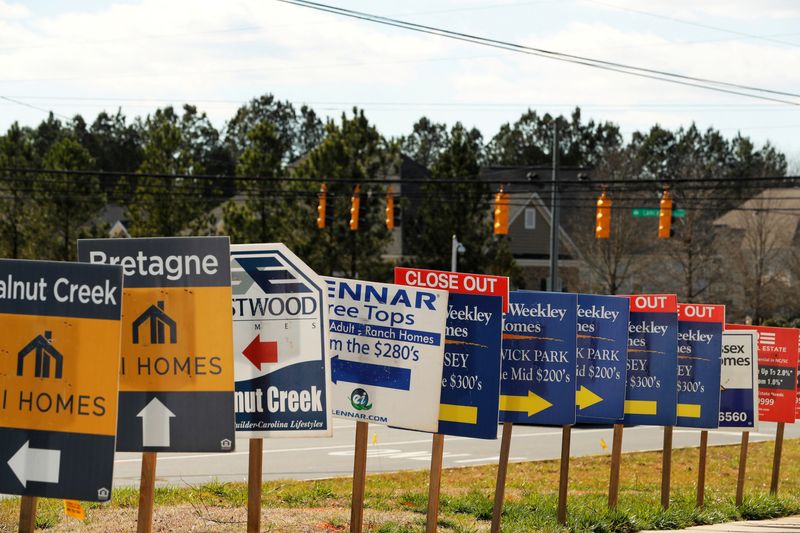By Chris Taylor
NEW YORK (Reuters) - Owning a home can feel like risky business, from coming up with the mortgage payment every month to worrying about disasters like fires or floods or tornadoes.
But here is something riskier still: Going without home insurance in the U.S. altogether.
It is called “going bare,” and 12% of American homeowners report doing just that, according to a study from the Insurance Information Institute (III) and Munich Re. That is up from just 5% in 2015.
In some areas, it is estimated to be even higher than that – between 15-20% of homeowners in Florida, the highest percentage in the country, according to the III.
That means if disaster strikes, you are "self-insured" – a fancy way of saying you will have to find the funds to rebuild. Unless you happen to have hundreds of thousands of dollars just sitting around, that won’t be pleasant.
“Thinking you can recover from a major catastrophe like a hurricane, tornado or wildfire without property insurance is unrealistic for 99% of U.S. homeowners,” says Mark Friedlander, III’s communications director.
Going bare is still fairly uncommon: That is because if you take out a mortgage on the property, lenders typically require proof of home insurance.
And yet, some homeowners are choosing to take on this risk. One reason for that is sky-rocketing costs: Average home insurance premiums are now $1,759 annually for $250,000 of dwelling coverage, according to financial information site Bankrate.com. That is a whopping 23% more than a year ago.
Secondly, coverage may be hard to find, since some insurers are not writing new policies, or are pulling back altogether from high-risk areas. After all, they face their own rising costs, from severe weather events to increasingly expensive building materials.
As a result, some homeowners are taking the biggest bet and going without any coverage at all – which is enough to make their financial planners tear their hair out.
“I live in Florida, and there is no good solution here,” laments Dennis Hunt, a planner in Melbourne, Florida. “I have a couple of different client families that have chosen to drop their home insurance coverage due to the skyrocketing premiums. I obviously advised against this.”
To avoid taking such a huge gamble, here are a few pointers.
SHOP AROUND AND HUNT FOR DISCOUNTS
Before you give up, put the work in and see what kind of rates you can get. That means diligent comparison shopping – according to Bankrate research, the insurers Erie, Auto-Owners and USAA offer some of the lowest rates available.
It also means loading up on any potential discounts, which you may not even realize you qualify for.
These include bundling with another policy such as auto insurance (generates an average 10%-25% discount on both policies), being claims-free, loyalty discounts (being a long-time customer of your insurer), installing a security system, adding smart home devices or being a retiree or senior citizen, says Friedlander.
CONSIDER PERSONAL CIRCUMSTANCE
There is no one-size-fits-all solution here – and some planners say that in limited, rare cases, self-insuring could be a legitimate option.
“What if the land is worth more than the house?” asks Kevin Dunleavy, a financial planner in Orlando. “What if it’s a rental that it is really a teardown? What if the client has enough investable assets to consider self-insuring? I think there are cases when forgoing dwelling coverage for much less expensive liability-only coverage makes sense.”
TWEAK THE POLICY
If the punishing premiums are scaring you off, there are ways to mitigate the costs. One common method is to increase the deductible. That means you will have to cover more modest claims out-of-pocket, but at least you will still be covered in the event of catastrophic loss.
In addition, you could "change your policy type from an HO-3 to an HO-2," suggests Bankrate insurance analyst Shannon Martin. An HO-2 policy is more basic coverage, where particular perils have to be named.
"Both changes may offer significant savings," Martin says.
If you do decide to 'go bare,' just realize that the bill may eventually come, and it could be a very high one indeed.
Just ask financial planner Paul Monax of Littleton, Colorado, whose town was ravaged by major hailstorms last summer, damaging roofs up and down his street.
“I have a neighbor that decided to self-insure,” Monax remembers. “They are replacing their roof out-of-pocket – for about a decade’s worth of premiums.”
